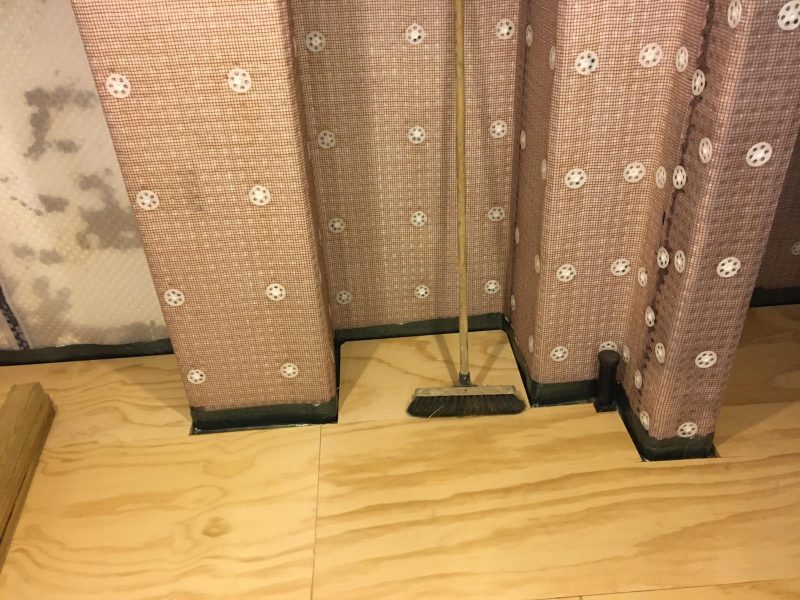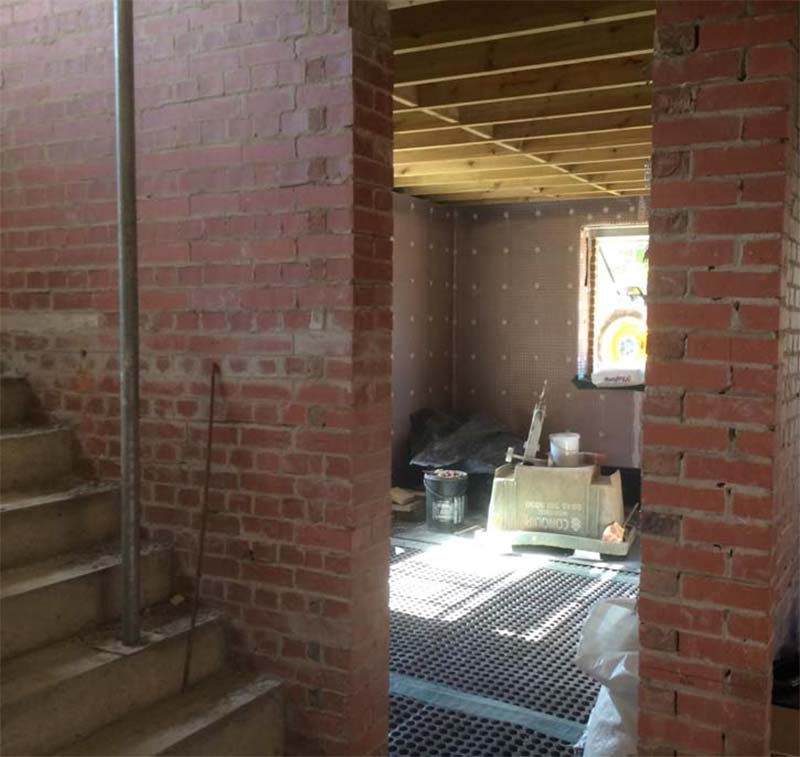
Basement Tanking That Works Without the Headache
Thinking about tanking your basement or cellar? Maybe you’ve noticed damp patches or water seeping through the walls. Maybe you’re mid-way through a basement conversion and want to make sure your new space stays dry. Whatever the case, basement tanking is one way to create a dry, watertight area below ground. But it’s not a one-size-fits-all solution.
Let’s look at what tanking really is, how it compares to other waterproofing methods, and whether it’s the right approach for your property.
What Basement Tanking Actually Means
Tanking is a type of Type A waterproofing. It’s about blocking the passage of water from the outside, preventing it from coming through the walls or floor of your basement. This is usually done using a tanking membrane, cementitious slurry or waterproof coating applied directly to the inside surfaces.
The idea is simple. You create a watertight barrier over the basement walls and floor so that water from the ground can’t pass through. The challenge is that water pressure builds, especially if you’ve got a high water table or poor drainage. That pressure can crack even the best-applied waterproof membrane.

Tanking a Basement Compared to a Cellar
While people often use the terms interchangeably, a cellar is typically older, sometimes with brick or stone walls. A basement is usually part of the original structure and more integrated into the building’s layout.
Tanking a cellar often involves more prep work and specialist products due to irregular walls and existing damp problems. Basement waterproofing is usually more straightforward, but still needs proper design to avoid future water ingress.
Whichever space you’ve got, the waterproofing system needs to suit the condition of your walls and floor, your drainage system, and whether you’re planning to use the space as storage or turn it into a habitable room.
Cementitious Tanking and Slurry Waterproofing
Cementitious tanking involves coating your cellar or basement walls with a special tanking slurry that bonds directly to the surface. This slurry forms a waterproof layer once it cures. It’s quick to apply and relatively low-cost.
Pros
- Affordable
- Good for blockwork or concrete
- Can be used in layers for better resistance
Cons
- Doesn’t handle movement well
- Won’t work long-term if water pressure is high
This method works best where the structure is sound and stable, and the external ground pressure is low to moderate.
Tanking Systems and Membrane Waterproofing Options
There’s more than one way to waterproof a basement. Besides coatings like slurry, there are tanking membranes and cavity membrane systems.
Cellar tanking membranes act as a physical barrier, applied to the inside of basement walls. These need to be sealed and overlapped correctly to work.
Cavity membranes are part of Type C waterproofing. Instead of blocking water, they let it flow behind a cavity wall, then channel it into a drainage system and sump pump.
Some basement waterproofing systems combine both methods. For example, you might use cementitious tanking on the floor and a cavity drain membrane on the walls for water management.
When You Need a Drainage System as Well
Tanking alone only works when the water pressure is low. If you’ve got a lot of water in the ground, it’s safer to install a drainage system that can relieve that pressure.
This usually includes:
- A drainage channel around the basement perimeter
- A sump pump to move water out
- Backup systems in case of power failure
If water enters the basement, the system catches and redirects it before it causes damage.
Cost of Tanking a Basement or Cellar
Cellar tanking costs vary depending on size, structure and how much prep work is involved. The figures below are just rough estimates and should not be taken as exact costs. Each project APP works on is custom and will require a customised estimate.
Typical figures in the UK:
- Basic tanking slurry starts at around £80 per square metre
- Tanking membrane systems start from £120 per square metre
- Cavity drain systems with sump start from £150 to £250 per square metre
Add to that the cost of survey, labour, materials and making good. The cost of basement waterproofing can rise quickly if there’s existing damp, structural damage or awkward access.
When Tanking Isn’t Enough on Its Own
Tanking a basement might sound like a solid fix, but it’s not always enough. If you’re dealing with high water ingress, hydrostatic pressure or poor drainage outside, then relying solely on tanking products is a risk.
In these cases, we often recommend combining tanking with a cavity membrane system or full Type C waterproofing. That way, you block what you can and manage the rest.
A trained surveyor will help design the right waterproofing approach for existing structures based on a site visit and full assessment.
Making Your Basement Habitable After Tanking
If you’re tanking to make the basement into a habitable space, you’ll also need to consider.
If you’re tanking to make the basement into a habitable space, you’ll also need to consider.
- Dry lining systems like dot and dab plasterboard
- Ventilation to control moisture
- Proper insulation
Basement Tanking FAQs
Maybe. But if there’s water pressure or visible damp, you’re better off with a specialist.
Properly applied tanking can last decades, but only if the structure is stable and pressure is low.
Not always. Tanking blocks water. Cavity systems manage it. Often, the best solution is a mix of both.
It can be, but only if designed and installed correctly. Get it wrong, and water will find a way in.
Yes, cellar tanking can significantly enhance property appeal and market value by converting unused space into functional areas.
Final Thoughts on Basement Tanking
Tanking is one part of the wider waterproofing system. If your goal is to block the passage of water and keep your cellar or basement dry, it can work well. But you need to understand its limits. Every basement is different, and the waterproofing approach needs to be right for your structure, water conditions and future use.
APP has been making cellars dry and basements watertight across the UK since 1967. If you’re planning a conversion or just want to sort a damp problem, speak to us first. We’ll give you honest advice and the right waterproofing design for your needs.
We’re Ready To Help You
Please get in touch with our friendly team today and we can get the ball rolling on your project sooner than you think.
